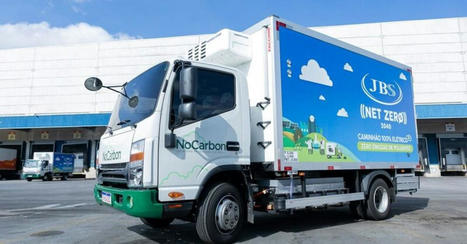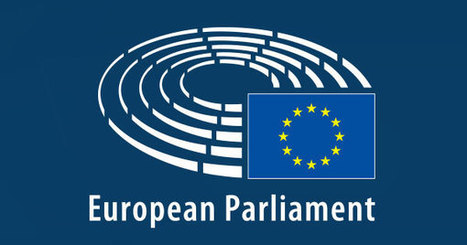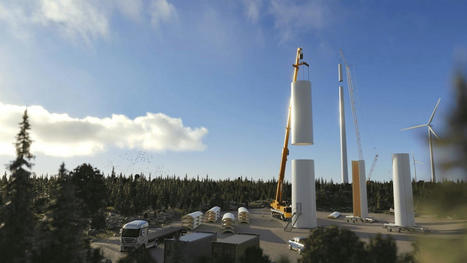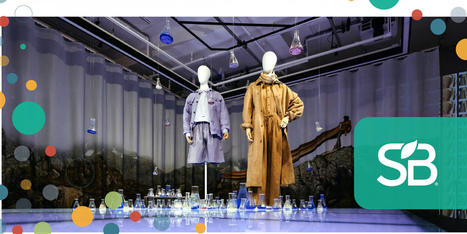 Your new post is loading...
 Your new post is loading...
JBS has announced the installation of biodigesters to provide a new outlet for the methane gas emitted in its industrial operations – the production of biogas, a renewable and clean energy source.
Environmental Footprint
The first phase of the initiative covers the group's nine Friboi units and reduces the business's scope 1 emissions by 65%, representing a reduction of 24.6% in scope 1 emissions across all JBS activities in Brazil.
With a R$ 54 million (€10.2 million) investment, this is the largest project of its kind in Brazil's protein industry, reducing the environmental footprint of its production process.
Via EcoVadis
Patagonia, Inc. makes outdoor clothing and is committed to the environment. The Ventura, Calif.-based company was founded in 1973 and has operated in at least 10 countries worldwide; it has factories in 16 countries. Since 1985, the company has given 1% of its profits to environmental causes.
The company says its mission is tied to the products it sells: the enterprise profits from marketing outdoor clothing. Patagonia is committed to organic materials and running all its operations using renewable energy. Indeed, the apparel industry is responsible for 6.7% of the globe’s greenhouse gases. It releases as much as 3.29 billion tons of CO2 equivalents annually, according to Quantis.
“We’re already at 100% renewable energy for our owned and operated stores, offices, and distribution centers, but the real challenge comes from materials manufacturing, which accounts for 95% of our emissions,” says Patagonia’s corporate responsibility statement.
Via EcoVadis
Australian retail chain Cotton On has pledged to strengthen its commitment to sustainability by setting goals for carbon neutrality, sourcing more sustainable raw materials and reducing its use of water and virgin plastic.
In its first 'The Good Report', the company details the steps it is taking to reduce its environmental impact which include a pledge to be carbon neutral and use 100 per cent renewable energy in its own operations by the end of the decade.
The Cotton On Group is also committing to using only raw materials which have sustainable attributes by 2030, and that all of its polyester and other synthetic materials will be 100 per cent recycled by 2025.
Via EcoVadis
Honeywell, an American conglomerate specializing in various industries, including manufacturing. It has recently committed to reaching carbon neutrality by 2035 and plans on achieving this goal through investments in energy-saving projects, a transition to renewable power sources and other similar initiatives.
The U.S.-based company’s sustainability goals have been at the forefront of its operations since 2004, and since 2010, it has taken on over 5,700 sustainable projects and saved $100 million per year.
Another notable company is Henkel, is a leader in the household and personal care manufacturing market. It has a comprehensive sustainability strategy that’s been the focus of its operations for 140 years. The company believes eco-friendliness and business success go hand in hand.
Henkel releases its sustainability report annually, showing goals it’s reached or is striving to. The organization ranked among the “2021 Global 100 Most Sustainable Corporations in the World,” a notable achievement that only a few organizations receive.
Then there is Ørsted, a multinational power company located in Denmark, which has made noteworthy progress in achieving its sustainability goals. The world’s most sustainable company for three years running, Ørsted says it is committed to fighting climate change, transitioning to renewable energy and decarbonizing the global supply chain. Ørsted has earned 62.2% of its revenue from renewable energy, reduced carbon emissions by 47% and spent millions of dollars in green investments.
Via EcoVadis
Current global emissions targets will only be achieved through the acceleration of innovative technologies, enabling industries to pivot their organizations towards sustainable operations. Digital technology may be the most powerful, scalable tool the world has to tackle climate change and 5G is at the forefront of this effort.
Operators of wireless networks have already taken numerous steps to limit emissions, such as reducing energy consumption, switching to more efficient network equipment, and sourcing renewable energy. However, offsetting the growth in data volumes over mobile networks will require more than improvements to current networks.
The impact of 5G is threefold in its potential to combat the effects of climate change: 5G, with its substantially greater energy efficiency, will reduce greenhouse gases, abate the emissions of other industries, and enable more precise monitoring of our environment to help meet broader climate change commitments.
Via EcoVadis
The biggest piece of climate change legislation the coming years is probably the reform of Europe's emissions trade system. It also represents the EU's first concrete steps to comply with the limits agreed at the COP21 conference. It could help to reduce emissions and encourage companies to shift to renewable or low-carbon sources. It should also help to prevent firms moving production to countries with lower environmental standards.
Via EcoVadis
|
Two companies are collaborating to make wind turbines more sustainable. Stora Enso, a biomaterials and wood construction company, and Voodin Blade Technology GmbH, a startup in Germany developing rotor blades for wind turbines, have partnered to create wooden wind turbine blades.
The wooden turbine blades are meant to replace heavier wind turbine blades made from non-renewable materials. Most traditional wind turbine blades are made from fiberglass and carbon fiber, which are both forms of plastic sourced from fossil fuels.
Once the blades reach the end of their lifespan, they are usually sent to landfills because they are difficult to recycle. The large size of wind turbine blades and their durable, composite materials make them challenging to recycle, so many go to landfills or are incinerated. According to the Union of Concerned Scientists, wind turbine blades last about 25 years. One study estimates that the number of wind turbine blades wasted globally could reach 43 million metric tons by 2050 as more nations increase their reliance on renewable energy sources.
Via EcoVadis
The pandemic has done more than just intensify the urge to travel, it has made us considerably more aware of the impact of our travel. According to Booking.com’s 2021 sustainable travel report, 61% of travelers said that the pandemic has made them want to travel more sustainably, and a further 81% intend to stay in sustainable accommodations at least once in the upcoming year. However, it is clear that barriers still remain, with 49% believing there simply aren’t enough sustainable options available to them.
Many hotels still largely depend on fossil fuels for their energy, and according to a recent green lodging trends report, a mere 21% have on-site renewable energy. These energy-intensive systems, used for things like heating water for showers and spas, and keeping guests’ rooms at comfortable temperatures create carbon emissions. These emissions, particularly at large resorts with an abundance of amenities add up, contributing to the roughly 8% of greenhouse gas emissions that estimates attribute to Global tourism.
Via EcoVadis
Climate change has been getting a lot of attention recently, and for good reason. The latest science shows the risk is manifesting faster and it’s not just fires and floods causing problems. A changing climate will gradually and increasingly impact us all. Science also tells us now is the time to take action for future generations and to ensure business resilience.
This is why Treasury Wine Estates has set an ambitious target of net zero emissions (Scope 1 and 2) by 2030. With 70% of these emissions generated from electricity, we have our sights on achieving 100% renewable electricity across our entire operations by 2024.
Targets are important for transparency and accountability. But how you achieve those goals is just as valuable.
As an industry with a significant agricultural footprint, there are three key areas wine producers can act on together to support the transition to a low-carbon future.
Via EcoVadis
A new report — co-authored by Fashion for Good and the Apparel Impact Institute (Aii) and sponsored by HSBC — for the first time charts a trajectory for the industry to meet the net-zero ambition, mapping the integral levers across existing solutions such as renewable energy, and emerging innovations such as next-generation materials and circular and other end-of-life solutions for textiles. Estimating an investment opportunity of $1 trillion to finance the transition, the report breaks down the funding needed by solution category and identifies the types of funders best placed to take advantage of the opportunity and benefit from the positive returns.
Via EcoVadis
As of January 2017, 65 companies have signed on, representing over 48 million MWh of annual demand by 2020, equivalent to powering 4.4 million American homes with clean, renewable energy.
Via EcoVadis
|



 Your new post is loading...
Your new post is loading...



















